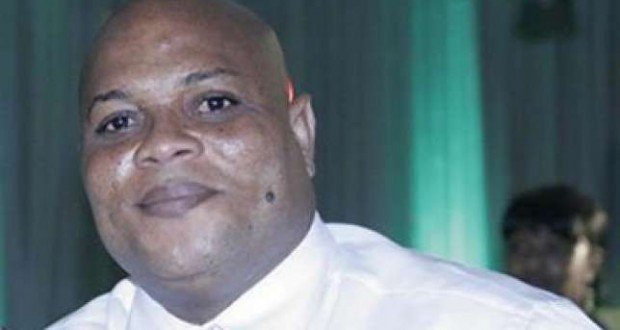The current Ebola epidemic has caused more than 1,400 deaths this year, in five West African countries – Guinea, Liberia, Nigeria, Sierra Leone and Senegal. The World Health Organization says more than 20,000 people could be infected before the outbreak can be brought under control. The stampede precipitated by this deadly disease, while justified, may be tempered by a better societal appreciation of the disease process.
The Ebola virus was named after the Ebola River Valley in Zaire, where the first outbreak was reported in 1976. Four out of five of the identified sub-species of Ebolavirus are of African origin and can cause infection in humans. These include: Zaire ebolavirus, Sudan ebolavirus, Cote d’Ivoire (Ivory Coast) or Tai’ Forest ebolavirus, and Uganda, Bundibugyo ebolavirus. The fifth virus,Reston ebolavirus, which has its origin in the Philippines, is not known to be disease-causing in humans. According to the United States’ Center for Disease Control (CDC), the recent outbreaks in Nigeria and the other West African countries are caused by the Zaire Ebolavirus (Ebola). The CDC further states that, the “virus is spread through direct contact (through broken skin or mucous membranes) with blood and body fluids (urine, feces, saliva, vomit, and semen) of a person who is sick with Ebola, or with objects (like needles) that have been contaminated with the virus. Ebola is not spread through the air or by water or, in general, by food; however, in Africa, Ebola may be spread as a result of handling bush meat (wild animals hunted for food) and contact with infected bats”
Normally, when the human body (host) is invaded by a “suspect” (pathogen), either bacteria or virus, such as during catarrh or cold, the (host) immune system responds by releasing protective “commandoes” agents (antibodies and cytokines) to fight off the “suspect” infection. The sequence starts with the detection and “arrest” of the invading “suspect” (pathogen), by a network of “security guard” cells – dendritic cells and macrophages. These cells function as “security guards” that “frisks” incoming “suspect” (pathogen) from the environment. Once the “suspect” (pathogen) is “arrested”, the “security guards” (dendritic cells and macrophages) send out signals for the host immune system to deploy the “commandoes”- antibodies and cytokines, to effectively immobilize or kill and expel the “suspect” (pathogen).
However, Ebola, unlike most things African, is astonishingly sleek and sophisticated in it modus operandi. It initially presents and is erroneously managed like any other relatively benign infection, such as malaria, typhoid, cholera, hepatitis, etc., with signs and symptoms, such as, sudden onset of fever, intense weakness, muscle pain, headache and sore throat. This is followed by vomiting, diarrhea, rash, and impaired kidney and liver function. When and if properly diagnosed at this point, a full recovery is likely with early and quick drug therapy, and/or appropriate supportive treatment. In non-fatal Ebola cases, patients typically improve 6-11 days after onset of symptoms, evidence that the “suspect” virus has been effectively “arrested” and eliminated by the host immune cells.
Ebola can however be deadly; primarily because of the way it invades the body “under the radar”. Itdisguises itself and stealthily evades detection and “arrest” by the “security guard” – dendritic cells and macrophages. Once inside and secured, the virus disarms the “security guard” rendering them incapable of sending signals for help to the protective “commandoes” – the antibodies and cytokines, to eliminate the “suspect” Ebola. As a result, the virus starts to multiply and invade more cells with reckless abandon, unchallenged, causing cells to die and explode. It is at this stage that the (host) immune system suddenly becomes aware that it has been overrun. It then begins a belated over the top uncoordinated defense, launching its entire immunological arsenal at once, through massive release of cytokines – the (host) immune system equivalence of “shock and awe” response to the already widely spread virus. This most extreme immune response, which also signals the terminal phase of the infection, is referred to as the “cytokine storm”- It is this cytokine storm, the host response to the Ebola that kills. During this condition, the (host) immune system turns on itself, attacking every organ in the body, bursting blood vessels and making the infected person bleed both internally and externally, through the orifices (eyes, nose, etc.). This also involves vomits and diarrhea, causing severe low blood pressure and/or hypotensive shock and subsequently, death. Typically, death occurs between 6- 16 days. While some viral infections like the dreaded Bird flu and Severe Acute Respiratory Syndrome (SARS) have the capacity to drive the immune system this wild, none does it like Ebola.
For a patient to survive therefore, all measures must be deployed to avoid the cytokine storm phase and the subsequent hypotensive shock. This can be accomplished through appropriate timely Anti-Ebola drug (ZMapp) or vaccine treatment, when available, and/or aggressive effective supportive treatment – such as maintenance of oxygenation, fluid and electrolyte therapy, blood pressure control with vasopressors, prevention and treatment of secondary infections, pain control and nutritional support, among others. As outbreaks seem to spread faster in areas of poor sanitary and infection control, including limited access to resources, such as clean running water, the use of chlorine disinfection, heat, direct sunlight, soaps and detergents to curtail the spread of the disease from exposed fluid from the infected person(s), could be invaluable to supportive treatment in African countries. Caregivers are also highly encouraged to wear impermeable gowns, gloves and facial protection, such as goggles or medical masks, to prevent splashes. Although much noise has been made about the trial Anti-Ebola drug ZMapp, but when compared with Nigeria’s supportive treatment approach, the recorded deaths at this point, for both groups, which are 33% (2 of 6 {ZMAPP treatment}) and 40% (6 of 15 {supportive treatment}) respectively, appear not to be that different.
While our healthcare workers have done brilliantly battling this deceptive rampaging disease, and deserve to be rewarded, our policy makers on the other hand appear to be as confused as an Ebola-infected host. There is no doubt that the Minister of Health, Professor Onyebuchi Chukwu has good intentions, but his knee jerk actions and reactions during this crisis have not inspired confidence in the public. His short lived embrace of Nanosilver as an “experimental” Ebola drug and the firing of 16,000 resident doctors were not well thought out. The constitution of a six-man working group on Ebolaresearch, led and populated by administrators, with no relevant expertise – such as research virologist, microbiologist or immunologist, with track records relevant to delivering on the terms of reference of the committee, can be injurious. This appointment violated basic principles of project management, which is, having the right people, with the right skills and the proper tools, in the right quantity at the right time.
In contrast, when President Barack Obama launched the Brain Mapping project last year – a serious US government initiative, aimed at conquering challenges such as epilepsy, autism and Alzheimer’s disease, he rightly selected a crack team of 15 top notch active scientists, led by competently credentialed experts, namely; Cornelia Bargman, PhD (Co-Chair), a neurobiologist at the Rockefeller University and William Newsome, PhD (Co-Chair), Professor of Neurobiology at Stanford University.
The six-man working group set up by Professor Chukwu is made up mostly of quality minds but on the wrong committee. President Goodluck Jonathan should immediately dissolve the group, and scour the globe and assemble a crack team of Nigerian scientists with the appropriate credentials, expertise and relationships to deliver on the terms of reference of the committee. As we know by now, while Ebola is dangerous, it is the host response or lack thereof that actually kills.
By Professor Edward Oparaoji
US Based Critical Care Pharmacologists and Pharmaceutical Research Scientist








